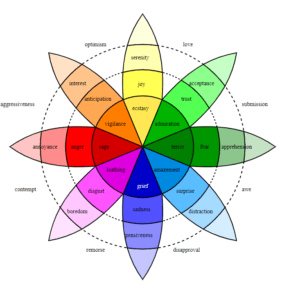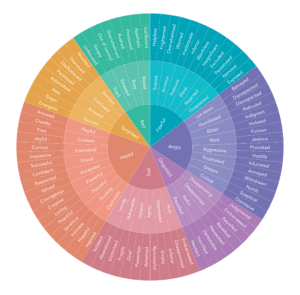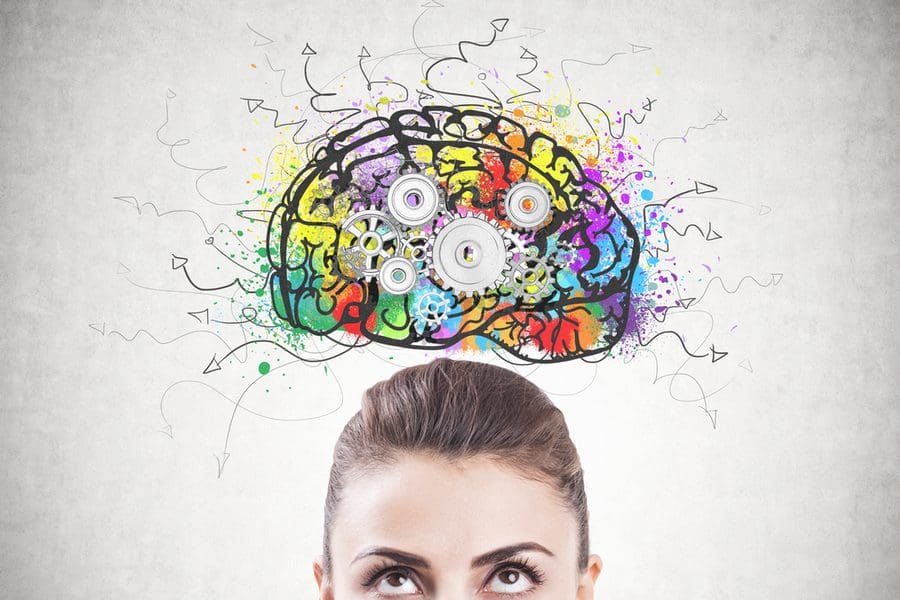As humans, we experience big feelings. Sometimes these emotions are easy to put into words and identify; other times, we struggle to make sense of how we feel, which can occur when we either don’t have the right words to express ourselves or because we are not able to identify the cause. But we have a tool you can reference in moments of reflection to help understand your feelings and communicate them more clearly: an emotion wheel. Let’s discuss!
Theory of Emotion

(image via wikimedia.org)
Dr. Robert Plutchik was a professor and psychologist who researched emotions, suicide, violence, and the process of psychotherapy. His revolutionary theory of emotion was one of the most influential of his time. In 1980, he created the wheel of emotions, which looks like a color wheel, to reflect each primary emotion’s counter emotion and break down each primal feeling. He postulated that there are eight primary emotions – joy, sadness, trust, anger, fear, anticipation, surprise, and disgust – and each has its own trigger. He also submitted that there are eight defense mechanisms that manifest the eight base emotions. Since then, the emotion wheel has evolved to break down the triggers or reasons for each manifestation of the primal emotions. Different interpretations of the wheel have also been created by successors in the field.
The Feelings Wheel

(image via calm)
This feelings wheel, constructed by Dr. Gloria Willcox, is featured on the Calm app. This wheel features seven primal emotions: happy, sad, surprised, disgust, fearful, anger, and bad.
A feelings or emotion wheel is a great tool for children and adults alike when we have trouble communicating how we feel and the actions we take due to those emotions. In many ways, it teaches us how to identify our primal emotions before we react.
For example, you might think, “I’m anxious, but I don’t know why.” The emotion wheel can help you identify the feeling you are experiencing, the primal emotion (fear) and the underlying intensity and reason for this emotion (overwhelmed and worried). By understanding our negative emotions, we can de-escalate unpleasant situations. It also helps in moments of high emotion. When we have clarity around what we feel, we are better equipped to have reasonable reactions, improve communication, and lead to better relationships and overall quality of life.






